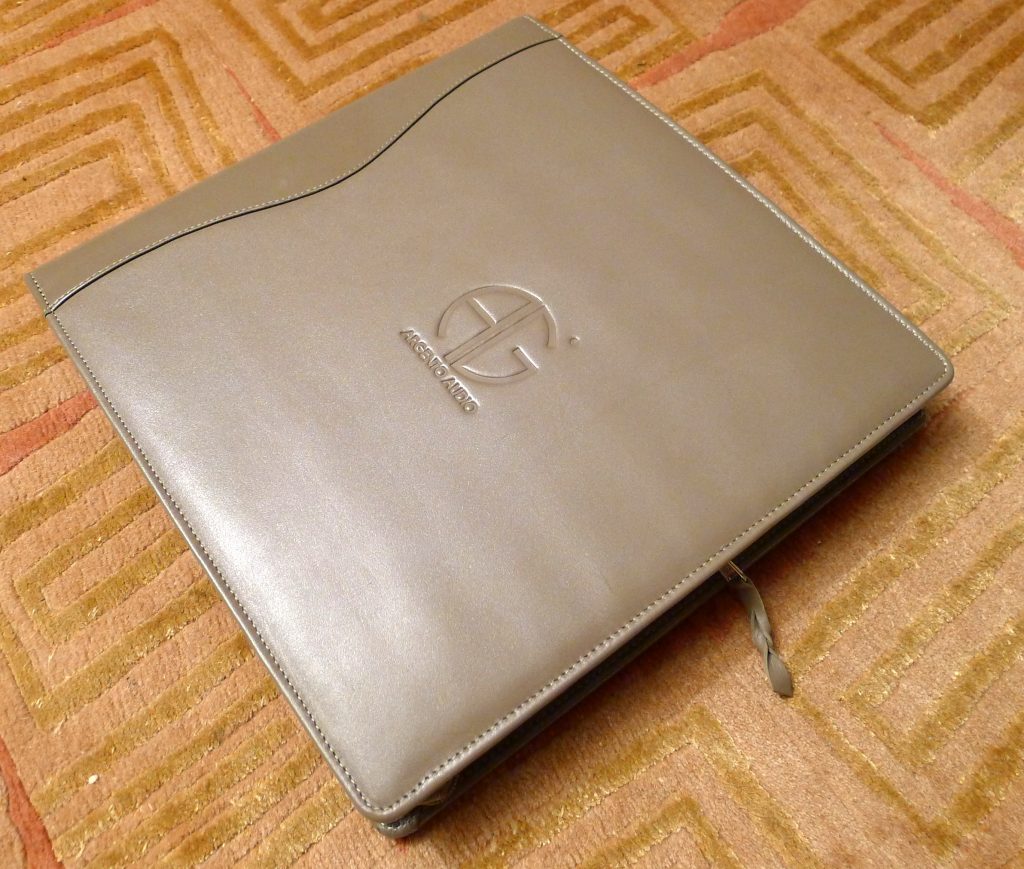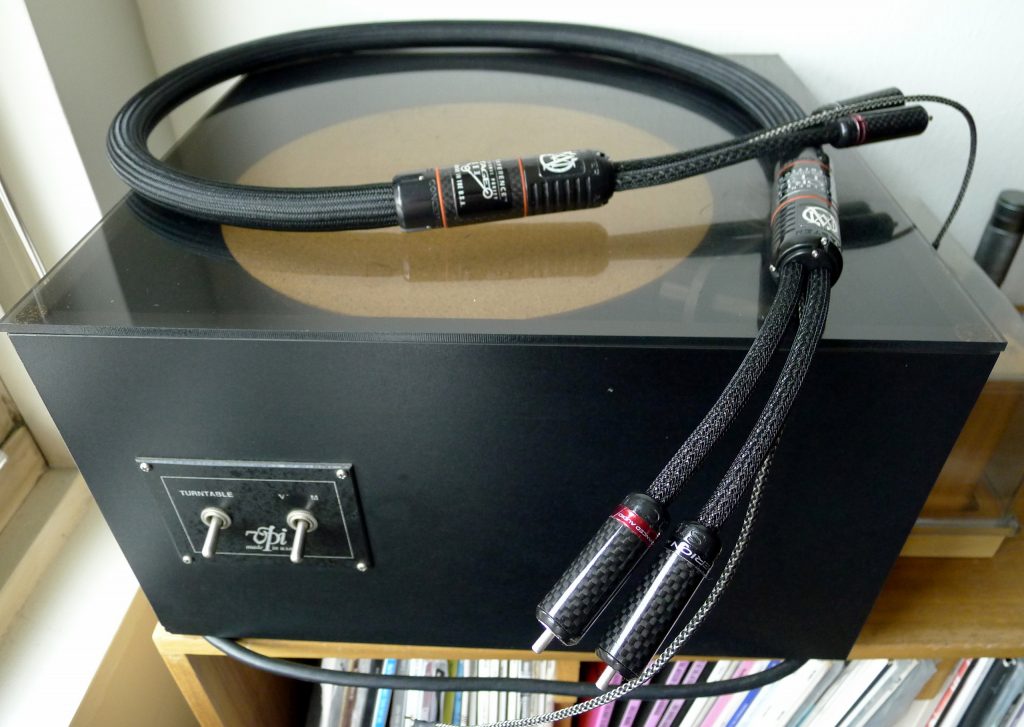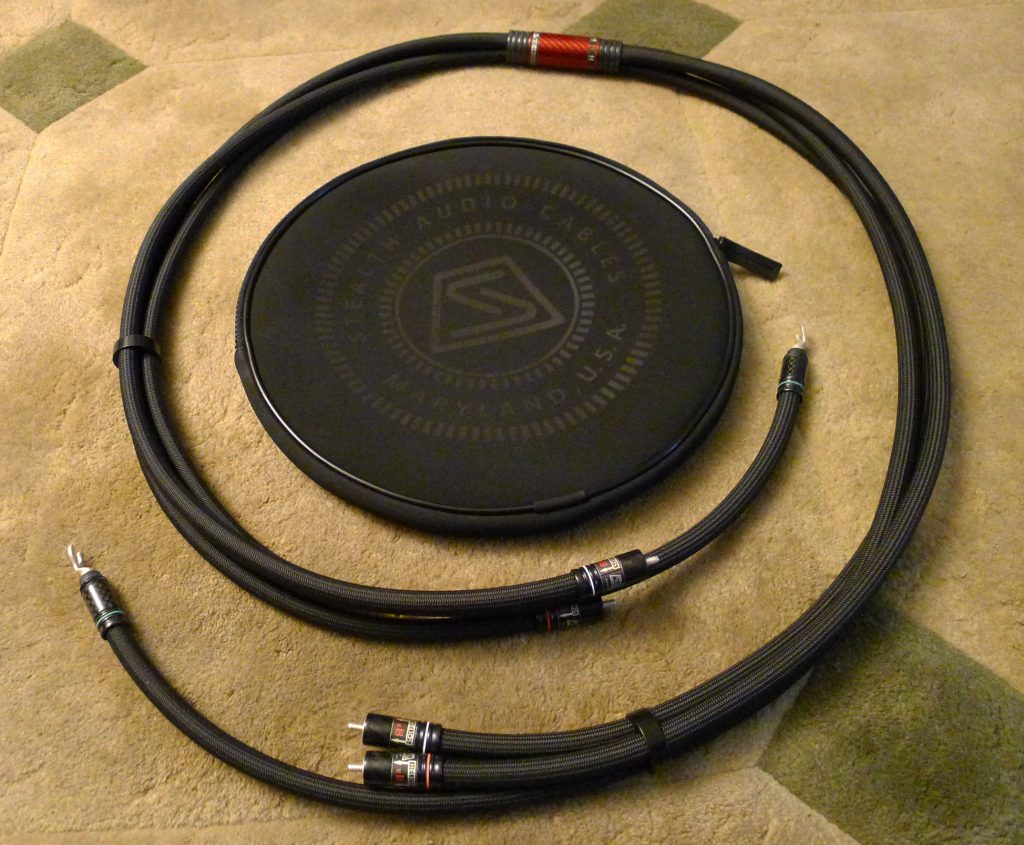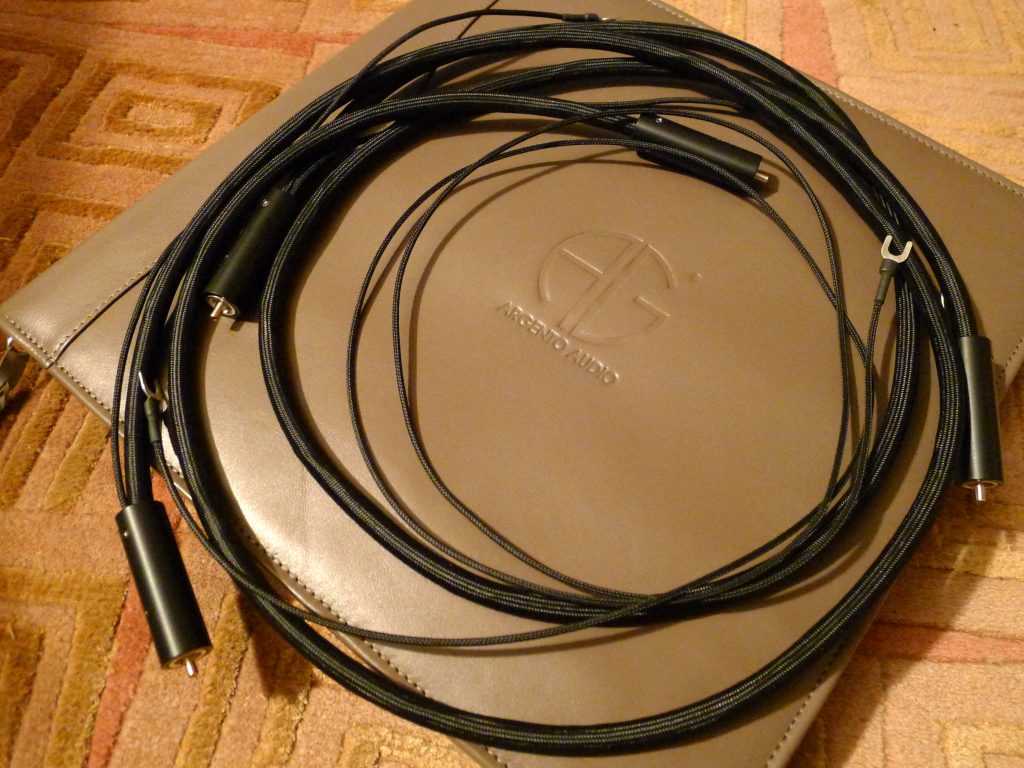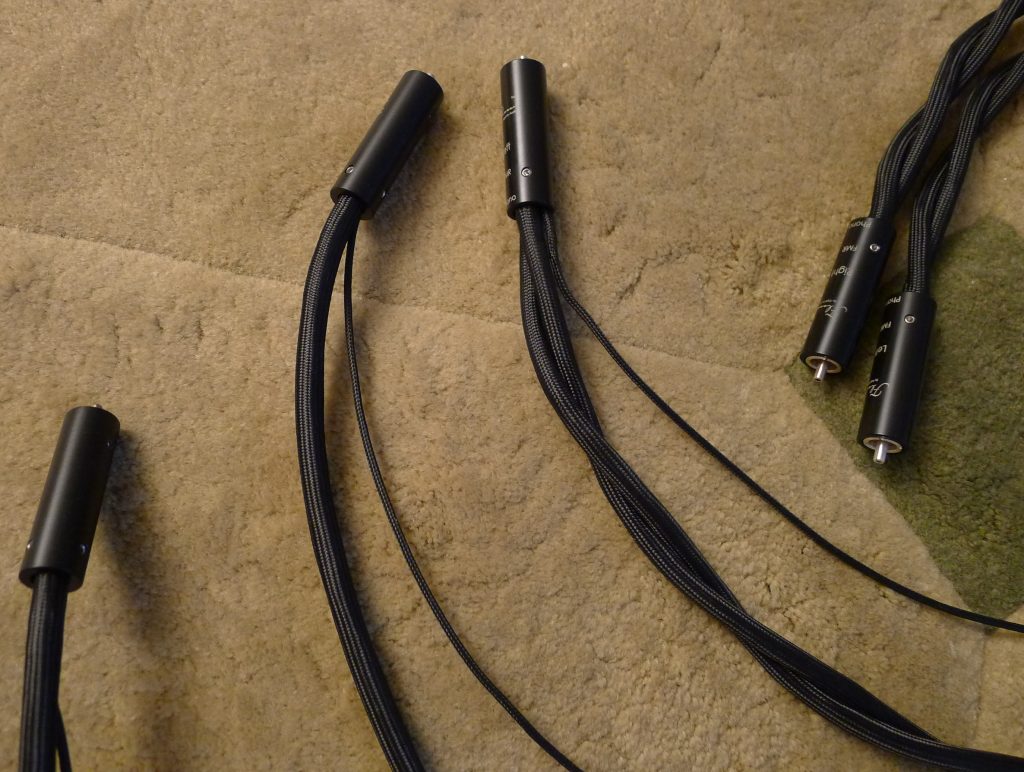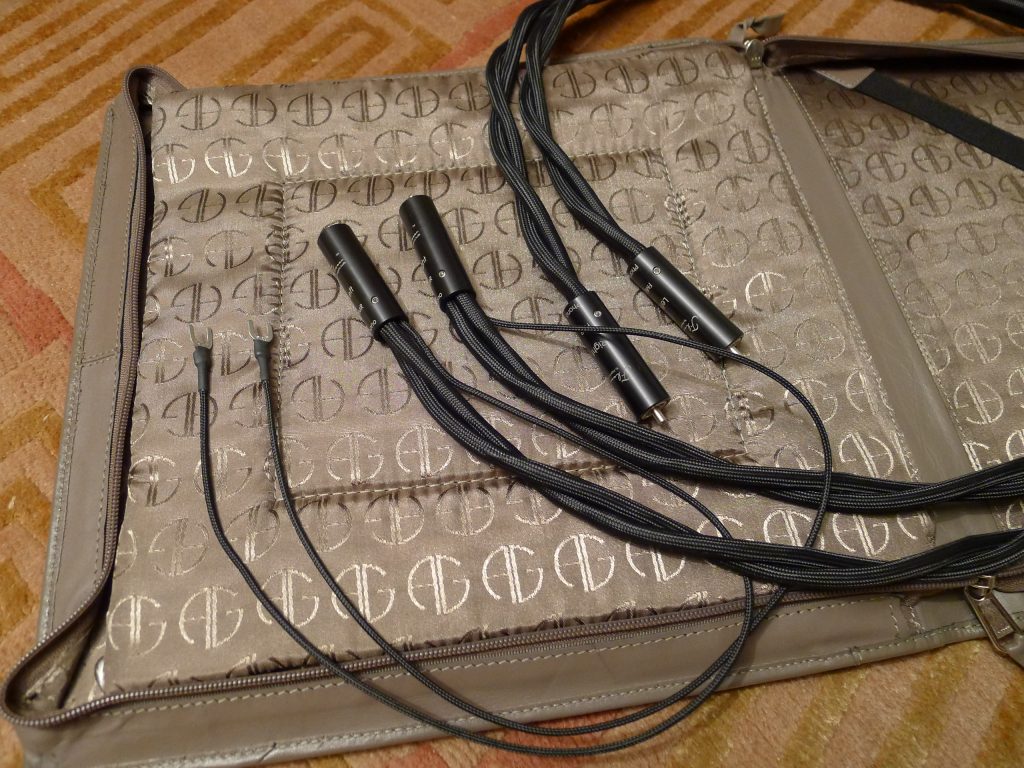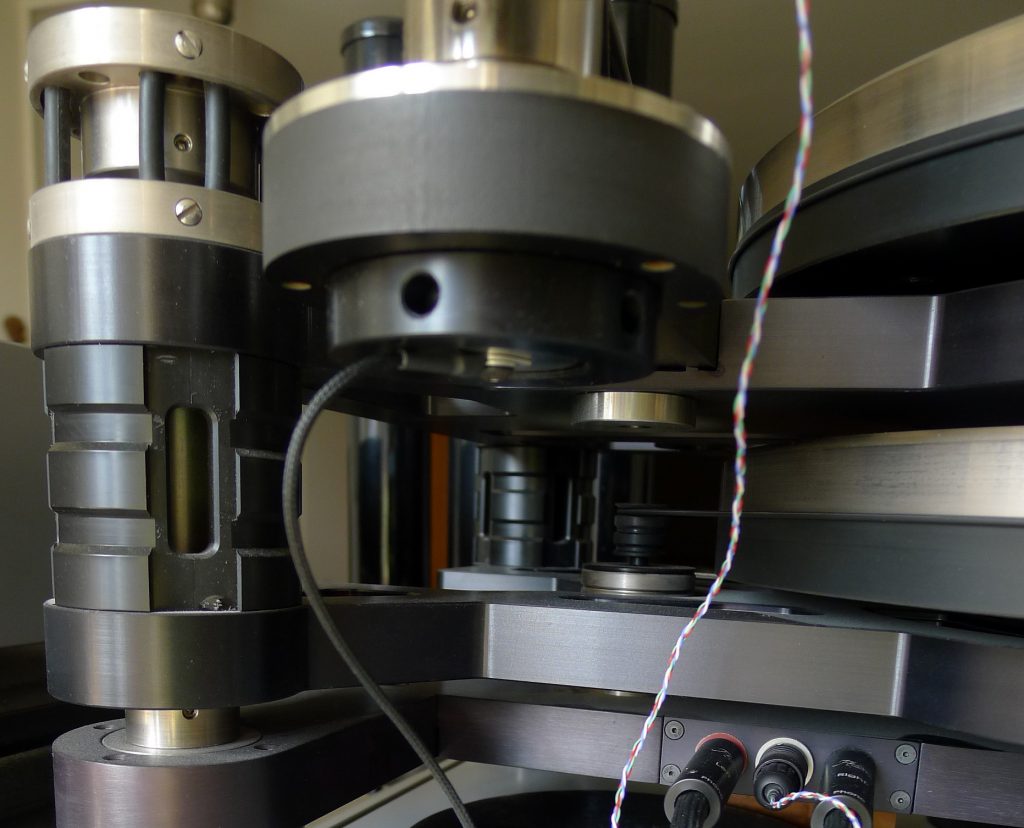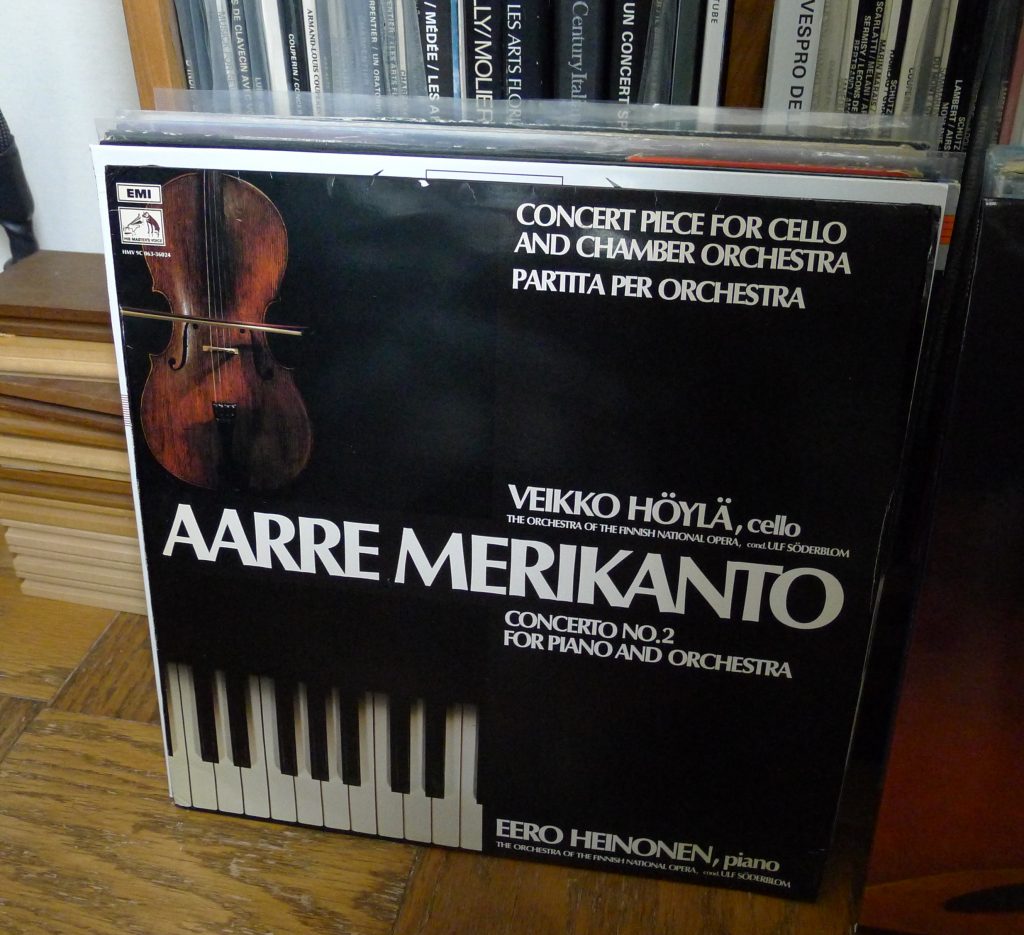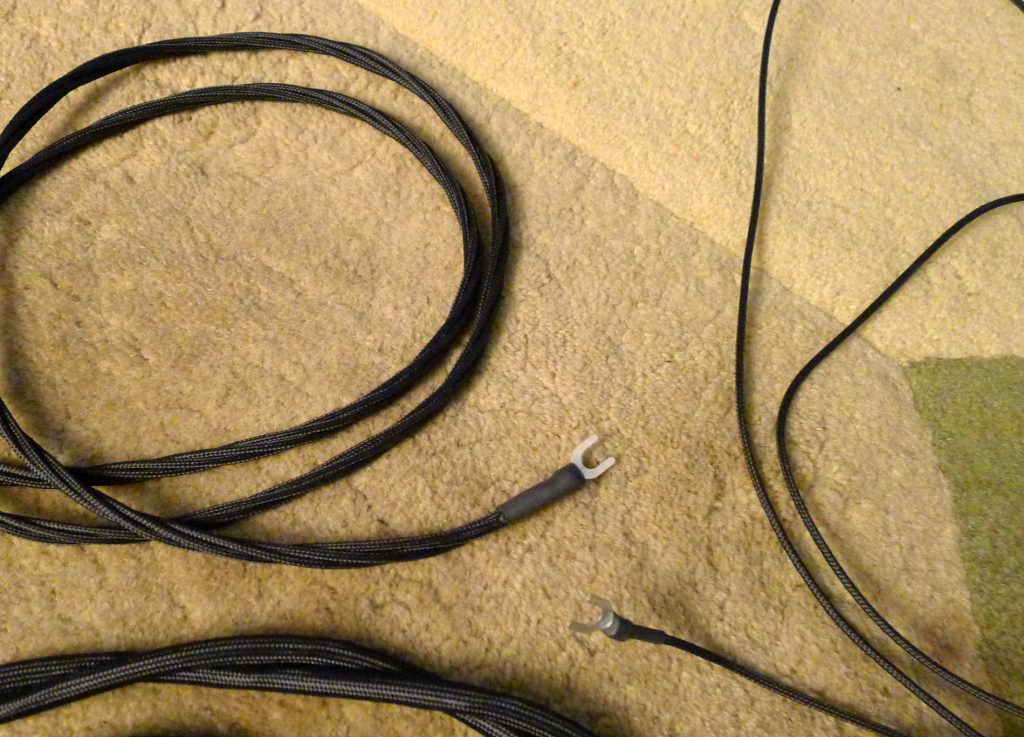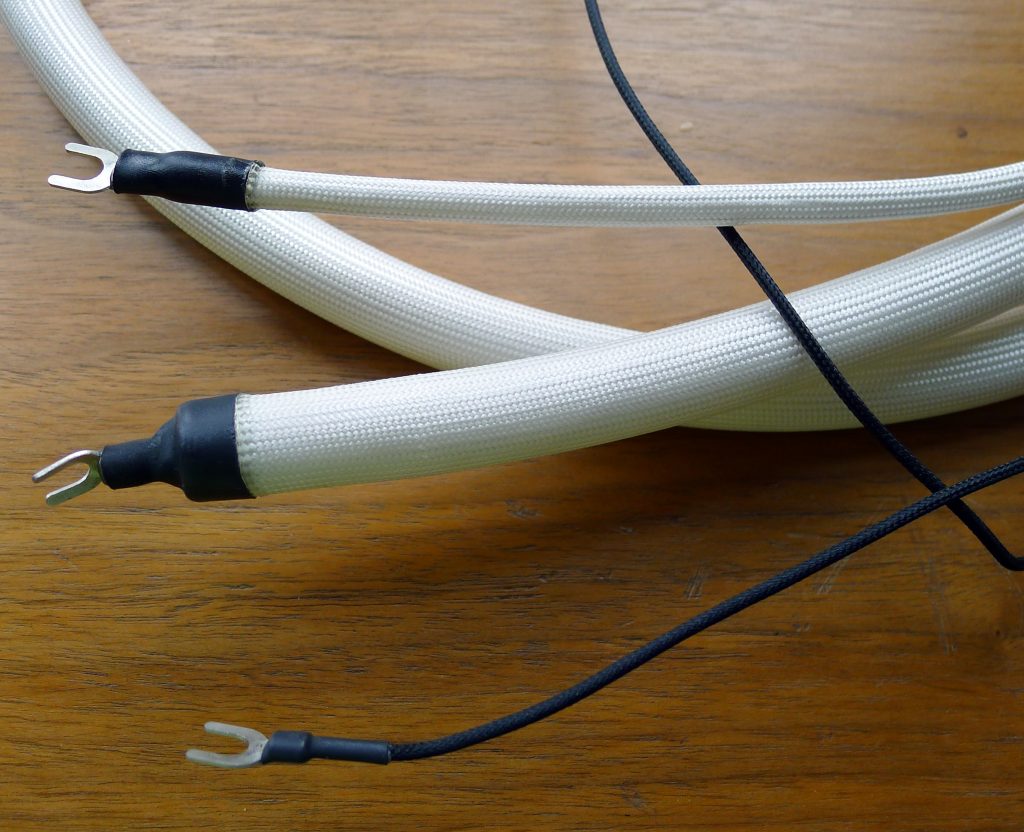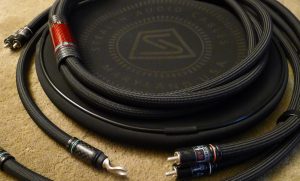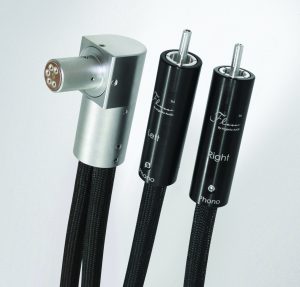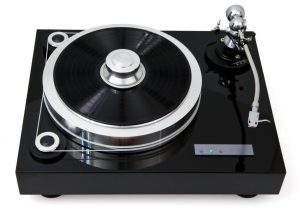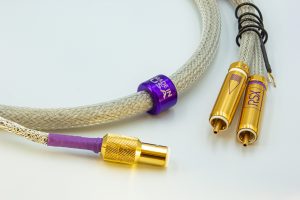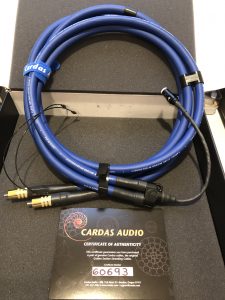Rounding third and heading for home, the fourth (and I hope final) contender in my phono cable shootout has arrived. By no means exhaustive, this mini survey involves only those on my short list, with the added qualification that the winner had to be worthy of "the bomb," as Bill Parish of GTT Audio refers to my Kronos Sparta turntable/Air Tight Opus cartridge front-end.
The Stage III Analord Master Phono Cable
It was a sad day for me when Aaudio Imports' generous long-term loan of the Stage III Analord Master Phono Cable ended. The Analord set a very high bar (MSRP $6600/1.5 m, review HERE). Who knows? In the end it might be the one. Its return put me in the market again, but luckily relief arrived in short order in the form of the STEALTH Audio Helios Phono Cable (review HERE).
The STEALTH Audio Helios Phono Cable
The Helios is a breakthrough design with the highest signal-to-noise ratio I've encountered in analog. Its principle virtue—noise reduction without music attenuation—is the stuff of fantasy. It is analog like you've never heard it and a definite contender, although at an even steeper price (MSRP $10,400/1.5 m).
The Argento Flow Phono Cable
Then came the Flow Phono Cable, the mid-level entry in the Argento Audio lineup (MSRP $7400/1.5 m, review HERE), and we moved to a vastly different sonic landscape. The Flow backed off from the precision of either the STEALTH or, to a lesser extent, the Stage III phono cable. It clearly wasn't designed to be resolute to the nth degree. Instead, its strength was intense musical communication—a welcome relief from the relentless audiophile norm.
the Flow Master Reference Phono Cable
The new arrival, the top-gun Flow Master Reference Phono from Argento, also happens to be the most expensive by far (MSRP $14,500/1.2 m). That's a lot of money. To put it in perspective, this wire costs more than my Air Tight Opus moving coil cartridge—one of the most expensive on the market—and nearly as much as the Sparta turntable itself.
The Flow and FMR phono
On the surface, the FMR shares many parts with the Flow: it has the same black dielectric and proprietary connectors. It is similarly flexible and ranks high on ease of use. But the body of it is at least double the Flow Phono; the FMR appears to be two (or more) Flow Phonos bundled together. I asked Ulrik Madsen, the proprietor and chief designer of the Danish firm, how they differ.
The FMR is a lot different from a construction point of view because of the different conductors and the geometry. The FMR has the following "extras":
-3 times the amount of silver distributed in 20 times as many conductors.
-Individual carbon fiber shielding for plus and minus.
-Higher purity silver that has gone through two cryo treatments and polishing.
The Ground wire is not shielded. The plus and the minus each have a separate shield as opposed to a common shield as in the Flow.
For comparison, recall how Ulrik had described the Flow Phono:
The Flow Phono uses only one conductor for each polarity in a twisted geometry with a spacer. Carbon fiber is used around the array to provide a little shielding without [introducing the ill effects of] reduced space and freedom that you usually get when using shielding. The ground wires are silk-insulated copper litz.
Installation & Grounding Options
My sample FMR Phono Cable was terminated with RCAs on both ends to fit on my Kronos Sparta turntable (which doesn't have a DIN plug). Like the Flow, the FMR has short pigtails with spades at one end. The spades are for optionally grounding the cable shield to the phono stage. I recommend you engage them: it brings more focus and more interesting sound.
The Sparta Ground connection
The Argento phono cables come with a separate ground wire that should be connected between the turntable (the bottom of the arm tube) and the phono stage ground post. This is a fully finished cable with spades and cosmetics rather like the short pigtails on the main cable and unlike most phono ground wires which are simply cut from a copper wire spool and crimped at each end. Build quality is worthy of inclusion in a $14,500 product.
Let's begin with the (un)famous Concert Piece For Cello And Chamber Orchestra by Aarre Merikanto (Finnish EMI, recorded in 1974). Some people rank Merikanto's early twentieth-century cello works among the top dozen. I wouldn't go that far, but they are interesting and well worth checking out.
How the Flow Phono Cable Does It
First, let's hear it via the Flow Phono Cable. In musical terms, you could say the system has acquired a pronounced holistic tic, like some acoustic seasoning has been sprinkled on it. Coherency and integration are pronounced; all of the frequencies arrive together and are delivered in a single package. An Old World, "speaking with one voice" quality is evident, a century-old aesthetic originating in Eastern Europe that has been out of style in America for a long time. In the USA, we prefer a New World style characterized by spot-lit instruments and frequencies heard disconnected from each other. The majority of audio cables are in this camp.
Orchestra in a Box
The Flow positioned the soloist up front and center, and relegated the orchestra to second fiddle, so to speak. Its low-level noodlings coming from behind and on either side of the cellist are almost like an afterthought and made me think the LP had a balance issue. This is relatively common with many concerto recordings, but it was extreme in this case. The soundstage occupied the space between the speakers, also in its way typical of many audio systems.
How the FMR Phono Cable Does It
Through the FMR Phono Cable the cellist remains prominent, but the keen acuity of the FMR uncovered a dimension of texture and low-level dynamic events in the orchestral part previously unheard. The balance issue is not as disturbing. Even though the orchestral scoring is sparse and marked piano, the counterpoint is significant. These are not throwaway parts.
The FMR delightfully resolves slight timbral differences and discriminates which of the four strings of the solo instrument is being played as he moves around the instrument. The FMR has a bias towards beauty—its timbres are simply gorgeous. Texture, timbre, inner life—the FMR enhances all, but the embellishment does not seem out of place. No one questioned its truthfulness. And it does this without incurring the unpleasant penalty of making the listener feel assaulted by an overload of detail. It's there, but not thrust on you. Needless to say, you don't get this level of differentiation from the Flow—or any cable I know of.
I don't have a dB meter, but I could swear dynamic range widened. I know this because I matched preamp volume levels when switching between the Flow and the FMR, and the FMR forced me to turn down the dial. It's interesting that the STEALTH Helios did this as well, but from the other side. With that cable, dynamic range expanded on the low side. The noise floor dropped precipitously (nothing can match the Helios here) and low-level, barely liminal stuff surfaced. It made me turn up the volume control.
How the STEALTH Helios Does It
The STEALTH Helios has what I (and I trust, most audiophiles) would call precision. Its expansive stage is packed with images and information and resembles a densely populated replica like a table-top set piece. The images are small, although full-bodied, and each owns a parcel of this real estate. The residents stay put in their little acre, never commingling or socializing with their neighbors. It's very clean and tidy, nothing is out of place, and it's very easy to follow the individual musical lines. But there's also a degree of rigidity.
The Orchestra Escapes the Box
The FMR presents an equally precise, expansive stage, but the images are larger and have soft boundaries—softer than the Helios (but not as soft as the Flow). This makes the FMR soundstage more flexible than the Helios (and a little less than the Flow). It also makes the FMR less forgiving and a little harder than the Flow.
As the sound swells, the instruments enlarge along with it, tending to spill over and commingle with their neighbors. They move around freely and you never get a sense of rigidity.
And when the orchestra crescendos, it often jumps out of the imaginary box between the speakers, pushing against the side walls. At those times it sounds like it needs a bigger room.
Conclusion
We have reached the end of my mini phono cable shootout. I auditioned four cables that would make any audiophile happy. All had superlative qualities, yet each was quite distinct.
It was fortunate that I finished up with the Flow Master Reference Phono Cable from Argento Audio. Sure, it pushes every button important to the audiophile, but it went beyond the old dog and pony show. The FMR opened up new possibilities in vinyl reproduction. It is probably the most musically ingratiating cable I've encountered and, in the same breath, it is wholly credible. The FMR is something you don't come across every day: a cable that reproduces exquisite beauty and is extremely persuasive that it's the truth.
Flow Master Reference Phono Cable
Retail: $14,500/1.2 m RCA-RCA or XLR-XLR
Retail: $15,500/1.2 m DIN to RCA or XLR
(price subject to change due to fluctuating exchange rates)
Argento Audio
Denmark
Part Two: The Ground Wire Saga Continues
Some cable designers believe the ground is the most important wire in an interconnect or phono cable.
When reviewing the Flow Phono cable I stumbled upon a relationship with an out sized impact that nobody's talking about: the phono ground wire. Most people think ground wires are only for getting rid of hum. Yes, but…
Today we understand ground potential effects more thoroughly. In fact a minor tweak industry has spawned. Suddenly there are third parties offering competing solutions that usually involve grounding components to a central chassis. Thin wires are run from the central chassis (which serves as a substitute earth) to each component. The goal is that everything sees the same ground potential. Some of these companies have discovered using a better wire makes the sound better and have started to market premium wires.
Wondering if this would apply to the turntable ground as well, I did an experiment with three ground wires: the one that came with the Kronos; the one that came with the Flow; and a homemade one. The phono cable was untouched, only the ground changed. Although not huge (not as much as you'd get by changing a power cable, for example), sonic differences were noted in all cases. The ground wire that came with the Flow was the clear preference.
Prototype Ground Wires: First Iteration
Then the fun began. I emailed Ulrik these results and he got on board with the project. When he sent me the FMR Phono he included a prototype ground wire. It has the same spade termination and black dielectric as the one that came with the Flow, but it is bulked up rather like the FMR itself. It has four copper wires in a twisted bundle, instead of a single like the Flow ground has.
We began a conversation.
MN: Preliminary results with the proto ground cable are good. It is a bit darker and warmer; you lose some brightness and crispness. But the sound is MUCH more resolving and insightful than with the standard one.
UM: Thanks for the input. I will definitely try other designs given the significant improvement in sound quality. Are you up for another ground proto or two?
The next day I emailed him:
Last night I tried the ground wire packaged with the STEALTH Helios phono with the FMR. It was good, in most respects as good as your proto ground, except a bit darker still.
The STEALTH phono ground is a very significant ground wire. It looks like a third signal bearing cable as big as the conductor wires, with the same dielectric and diameter. In other words, it is an elaborate, fully conceived cable.
Interconnect-Quality Ground Wire Prototypes
The comparison to STEALTH must have greased the wheel. In due course, a parcel arrived with two more prototypes. Now we enter the realm of interconnect-quality ground wires.
UM: The shipment with the additional ground cables should arrive at your place tomorrow. The shipment contains two cables:
Cable 1: The exact same cable as we use for the conductors in the FMR phono.
Cable 2: 4 times the cable we use for the conductors in the FMR phono.
Ulrik was careful to point out none of these protos employ any form of shielding. He has strong concerns about the overuse of shielding: it must be used with caution. For consistency's sake, let's label these ground wires as follows: The first with the quad copper is Proto #1; the one with the same silver as the FMR phono is Proto #2; and the last with quad silver is Proto #3.
Second iteration
Proto #2 drastically shifted the tonal balance upwards. It's getting repetitive, but I remind you once again: the phono cable itself was not touched; only the ground was replaced. It sounded so bright I wanted to quickly remove it, but I wondered if possibly burn-in might be necessary so I gave it three days of burn-in, then noticed it had calmed down and adjusted somewhat. So, yes, ground wires do have a settling in period. What's more, it only counts as burn-in if signal is flowing. Go figure.
Proto #2 is still much lighter in tone than the quad-copper Proto #1. However, it brought out a level of detail and nuance not heard with the copper ground wires.
3 ground cables
Third Iteration
Proto #3 is a monster. It doesn't look like Proto #1 with four cables twisted together, or like the FMR phono itself with two cables twisted together. Proto #3 came in a tube much thicker than the FMR phono cable. Inside is a bundle of four cables arranged with the kind of elaborate geometry that you find in interconnects.
My hopes were high when I slipped in a virgin Proto #3. They were quickly dashed. It was bright, harsh, and sounded so confused I even went behind the rack to check if the preamp had somehow gotten out of phase. I left it to burn-in some more. A day later it was still unlistenable. After another day I was stunned by the metamorphosis.
Back to Proto #1
I did several demos of these protos for visitors using the Merikanto LP. Proto #1, the quad copper conductor, has a ballsy kind of sound with a lot of heft but not much delicacy. Jonathan noted it had fabulous string tone. Joseph pointed out the descending triplet played by the harp at the beginning of the Merikanto is quite clearly stated as "ding, ding, ding."
Swapping to Proto #2, the descending triplet receded and the soloist blended more with the chamber orchestra. I was struck by the incredible level of detail! It is still brighter, but not in a good way.
Slipping in Proto #3, there is ultimate clarity in the descending "ding, ding, ding" on the Merikanto. From my own notes for Proto #3: "Wow! The sound got so BIG. Amazing staging, more color, powerfully dynamic—more of everything." The impact was drastic. Proto #3 combines the weighty tone of the copper Proto #1 and the finesse of the silver Proto #2.
Universally, visitors were in disbelief. How a ground wire could yield the kinds of sonic differences that you would get from swapping from low-end to mid-level to-high-end cables boggled their collective minds. It does not carry a signal! Further, it seems that everything important in interconnect design—the conductor material, its geometry, possibly even shielding and dielectric—all seem to apply to ground wires as well.
Ulrik indicated that the upgraded ground wires will be available sometime next year.




